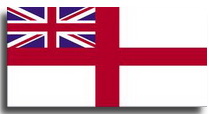United Kingdom - Machtres Fighters
Main menu
- index
- Air Services
-
Planes
- list
- Weapons
- Gallery
- transport
- liners
- X projects
- Air Forces
- Air Disasters
- red-bull
- Specials
- Choppers
- History
- Aircraft Carriers
-
Information
- Argentine
- Space
United Kingdom
 The new UK CVF Royal Navy aircraft carriers, HMS Queen Elizabeth and HMS Prince of Wales, are expected to enter service in 2016 and 2018.
The new UK CVF Royal Navy aircraft carriers, HMS Queen Elizabeth and HMS Prince of Wales, are expected to enter service in 2016 and 2018.
CVF will displace 65,000t, a size between the USA's 100,000t Nimitz Class and the French 43,000t Charles de Gaulle Class aircraft carriers, and three times larger than the 20,000t UK Invincible class carriers.
The carrier will have a maximum speed of 25kt.
Queen Elizabeth Class contractors
In January 2003 the Ministry of Defence announced that the preferred prime contractor for the UK future aircraft carrier is BAE Systems with Thales UK as the key supplier. The industrial partnership between BAE Systems and Thales UK is known as the Future Carrier Alliance.
VT Group and Babcock have also joined the alliance.
In December 2005, the UK MoD approved funding of the demonstration phase for detailed design of the carriers, the first part of the main gate decision. It was also announced that 60% of the carriers would be built at four UK shipyards -
In April 2006,
In July 2007, the UK MoD announced main gate approval for the construction of the carriers. At the same time BAE Systems and VT Group announced the planned creation of a joint venture for the design, manufacture and support of UK surface warships. The joint venture company, called BVT Surface Fleet Ltd, began operations on 1 July 2008. This was followed on 3 July 2008 by the UK MoD signing the contracts for the two carriers with BVT and other members of the alliance.
In March 2008, Brand-
In December 2008
In January 2009
The major contractors include BAE Systems -
CVF hull
The Maritime Group at QinetiQ have developed a suite of advanced modeling and simulation programs that are being used by the QinetiQ and DPA teams with BAE Systems and the major contractors to characterize the hull, flight deck, hangar deck, internal carrier design and other features.
The carrier's service life is substantially longer than the 20-
Joint combat aircraft operations
The maximum sortie rate is 110 joint combat aircraft sorties in a 24-
The standard air-
The maximum launch rate is 24 aircraft in 15 minutes and the maximum recovery rate is 24 aircraft in 24 minutes.
The MASC assessment phase for an airborne early warning aircraft to succeed the Sea King ASaC mk7 helicopter was launched in September 2005. In May 2006, three study contracts were awarded for MASC platform and mission systems options. The contracts were awarded to: Lockheed Martin UK to study the potential of using the Merlin with AEW mission systems, Agusta-
In July 2006, two further study contracts for the enhanced manned rotary-
Under contracts placed in September 2008, Babcock will supply the highly mechanized weapons handling system (HMWHS) and BAE Systems Insyte the air traffic control system for the two vessels.
Islands
Instead of a traditional single island, a current ship design has two smaller islands. The forward island is for ship control functions and the aft (FLYCO) island is for flying control.
Advantages of the two island configuration are increased flight deck area, reduced air turbulence over the flight deck and increased flexibility of space allocation in the lower decks. The flight control centre in the aft island is in the optimum position for control of the critical aircraft approach and deck landings.
Depending on budget availability, the radar fit will include a BAE Systems Insyte Sampson multi-
Aircraft carrier deck
The deck will support simultaneous launch and recovery operations. The deck is fitted with a 13° bow deck ski jump.
No catapult or arresters will be fitted in the initial build but the carrier will be built to accommodate a future back-
The deflectors protect the deck from the blast of the F-
An electromagnetic aircraft launch system (EMALS) is to be developed by General Atomics in USA for the USN CVN-
Systems
Selex Communications was awarded the production contract for the vessels' identification friend or foe (IFF) systems in October 2007.
The Queen Elizabeth Class will be fitted with the Royal Navy's new-
Aircraft carrier propulsion
The MoD has decided not to use nuclear propulsion because of its high cost, and has chosen a podded propulsion system based on Rolls-
The propulsion system will consist of two Rolls-
In December 2007, the UK MoD placed a contract with Wärtsilä Defence for two 12-
L-
CVF will carry over 8,600t of fuel to support both the vessel and aircraft.

Ship Crew 600
Air-
Dimensions:
Overall Length 284m
Beam (Waterline) 39m
Beam (Overall) 73m
Draught (Keel to Waterline) 11m
Length at Waterline 250m
Full Load Displacement 65,000t
Depth to Top of Masthead 56m
Performance:
Maximum Speed 25kt
Economical Speed 15kt
Range 10,000nm
Ship Availability (Two Ships) 584 ship days a year
Endurance Between Replenishment 7 days
Interval Between Dockings 6 years
Upkeep Interval 6 months maximum
Propulsion:
Rolls Royce MT30 Gas Turbines 2 x 36MW
Auxiliary Diesel Generators 2 x 7MW
Emergency diesel generators 2MW each
Electric Motors 2 x 30MW
Shafts 2
Aviation Facilities:
Hangar Length 155m
Hangar Width 33.5m
Hangar Height 6.7m
Deck Edge Lifts 2
Featured Suppliers:
Converteam -
L-
L-
Rolls-